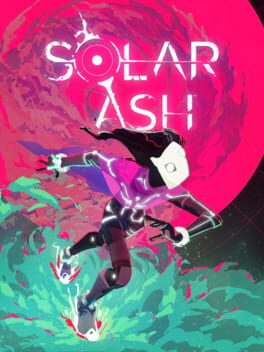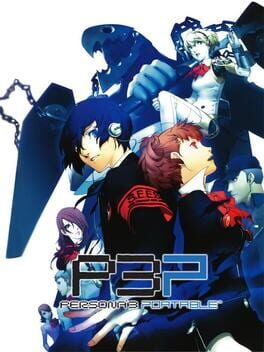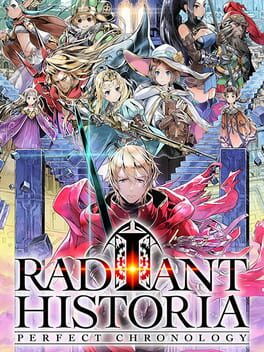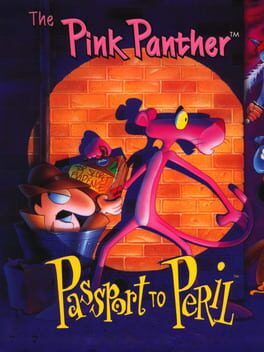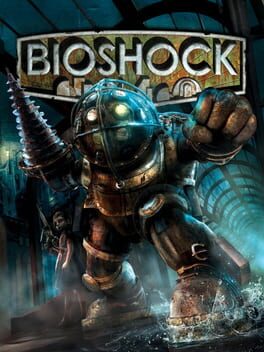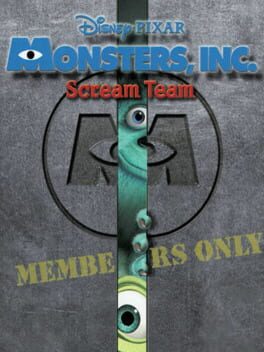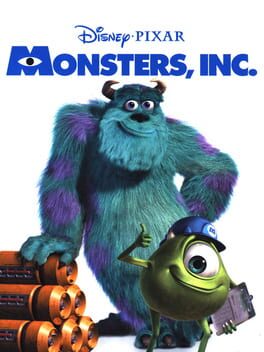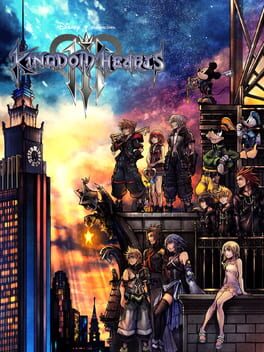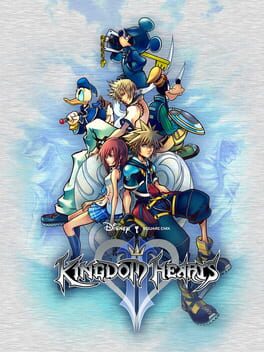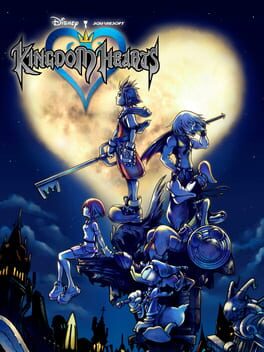JMCristan
2023
I both loved and hated this game while playing. The game is slick: combat feels amazing after you master the weird time of its parries. The lighting and scenery are both gorgeous. And despite all this flair, the game runs with absolute consistence. This is a game that released in a pretty much finished state, and is kind of sad to recognize how amazing this feels, to be able to play a recently released game.
Some of its bosses are VERY hard. I spent hours and hours in some of them. I needed a week to beat the Green Swamp Monster. I've fought the King of Puppets countless times. And the last boss, damn. I can't even believe that I've beaten it.
Maybe the game is too hard? Lies of P feels like the idea of Dark Souls of people who haven't played Dark Souls. Lies of P enforces getting gud. It's linear (you'll visit its words in an order that's set in stone) and it's brutal.
I can't dismiss what Lies of P achieves, though. This is a very consistent "soulslike" experience. Even the later levels are still somewhat good. It has high highs and pretty decent lows. You add that to the technical prowess, and you get a great game that is a joy to play if you enjoy soulslike brutality.
Some of its bosses are VERY hard. I spent hours and hours in some of them. I needed a week to beat the Green Swamp Monster. I've fought the King of Puppets countless times. And the last boss, damn. I can't even believe that I've beaten it.
Maybe the game is too hard? Lies of P feels like the idea of Dark Souls of people who haven't played Dark Souls. Lies of P enforces getting gud. It's linear (you'll visit its words in an order that's set in stone) and it's brutal.
I can't dismiss what Lies of P achieves, though. This is a very consistent "soulslike" experience. Even the later levels are still somewhat good. It has high highs and pretty decent lows. You add that to the technical prowess, and you get a great game that is a joy to play if you enjoy soulslike brutality.
2021
I played it on Game Pass and kind of liked it. You are a slender robot-ghost-like creature named Rei, and you want to save your planet. So you skate through planets with unusual gravities, making your way in these environments, trying to get to points of interest where you have to do little challenges. When you complete the challenges of an area, a colossi-like creature, called an abomination, starts to roam the area. You have to hit it three times, and each hit requires a challenge similar to the environmental ones, but tighter and slightly more demanding, albeit very spetacular, visually.
I can't tell you anything about the story, though, as it is conveyed through short (and mysterious) cutscenes. Solar Ash have the kind of story you need to read the logs to really understand. I don't really do that, and I don't know what is really happening in this game.
I've really liked it, but I also didn't finished it. Is that a thing? I love games that make traversal a joy. The game looks very alien, cold, even. The visuals don't endear you, but they can take your breath away from time to time. The game has sprawling vistas with crazy gravity making unusual horizon sights. The colossi battles look amazing.
What I don't liked about this game is that the final stages try to be more challenging by... Constricting your movement. The second to last stage is a swamp of sorts. If you touch the poisonous part of it, the green water part, Rei becomes vulnerable and will die if she touches the green stuff again. So you have to wait for a toxicity timer to cool down so you can carry on to your journey.
In the last stage, there is lava, and lava kills Rei instantly. This flips one quality of the game (pulling off increasingly complex environments without offering you a map, relying on landmarks instead) and makes it detrimental to it. I found it hard and frustrating to keep track of my limited options of traversal. Also, I don't care about the story, and all colossi play similarly, so I don't think I'll be illuminated by persisting until the end.
Still, I recommend you to play even a little of this! It builds neatly on top of ideas from Jet Set Radio, Gravity Rush, Shadow of the Colossus. More games should have movement as fun as this.
p.s: I don't agree that this game controls badly. You just have to know when to dash and when to keep your speed low. When you can't do the timed challenges on bosses, it is usually because you're making things harder to yourself by speeding, as the time limits ain't that strict and you don't need to dash a lot to be able to adhere to them.
I can't tell you anything about the story, though, as it is conveyed through short (and mysterious) cutscenes. Solar Ash have the kind of story you need to read the logs to really understand. I don't really do that, and I don't know what is really happening in this game.
I've really liked it, but I also didn't finished it. Is that a thing? I love games that make traversal a joy. The game looks very alien, cold, even. The visuals don't endear you, but they can take your breath away from time to time. The game has sprawling vistas with crazy gravity making unusual horizon sights. The colossi battles look amazing.
What I don't liked about this game is that the final stages try to be more challenging by... Constricting your movement. The second to last stage is a swamp of sorts. If you touch the poisonous part of it, the green water part, Rei becomes vulnerable and will die if she touches the green stuff again. So you have to wait for a toxicity timer to cool down so you can carry on to your journey.
In the last stage, there is lava, and lava kills Rei instantly. This flips one quality of the game (pulling off increasingly complex environments without offering you a map, relying on landmarks instead) and makes it detrimental to it. I found it hard and frustrating to keep track of my limited options of traversal. Also, I don't care about the story, and all colossi play similarly, so I don't think I'll be illuminated by persisting until the end.
Still, I recommend you to play even a little of this! It builds neatly on top of ideas from Jet Set Radio, Gravity Rush, Shadow of the Colossus. More games should have movement as fun as this.
p.s: I don't agree that this game controls badly. You just have to know when to dash and when to keep your speed low. When you can't do the timed challenges on bosses, it is usually because you're making things harder to yourself by speeding, as the time limits ain't that strict and you don't need to dash a lot to be able to adhere to them.
2023
"Sea of Stars" é, no momento em que escrevo isso daqui, o jogo mais novo do estúdio indie Sabotage - os responsáveis pelo bem-recebido "The Messenger". O estúdio está criando seu próprio MCU, e esses dois jogos se passam no mesmo universo, com ainda outros por vir. "The Messenger" parece um Ninja Gaiden das antigas, com um quê de Metroidvania, e foi amplamente bem recebido. "Sea of Stars" tem gráficos de Chrono Trigger² (com iluminação dinâmica e outros caprichos modernos) e um sistema de batalha com foco em reagir às animações com o botão, como Super Mario RPG. O jogo foi muito bem recebido pela crítica, que o pintou com noves e dezes. O público hardcore, frequentadores de fóruns e do X, parece mais dividido.
Os grandes trunfos de Sea of Stars: o gráfico de SNES com iluminação dinâmica ficou muito bom. O jogo usa perspectiva isométrica pra retratar diferenças de altura, e tem mecânicas boas de travessia. Os bonecos nadam, escalam, andam de ladinho em beiradas finas, pulam, tem até um "grapple hook". Essas mecânicas ficaram boas mesmo, e todos os cenários que Sea of Stars se propõe fazer ficam mais legais por causa delas. Uma caverna de Sea of Stars é muito mais legal de atravessar do que uma caverna semelhante nos clássicos que o inspiraram.
Há puzzles de travessia e falsos puzzles de lógica. Os dois tipos são bem fáceis, e os puzzles mais desafiadores do late game de Sea of Stars são como a segunda dungeon de um Zelda. A ideia não é oferecer fricção considerável, mas preencher de microdesafios o ato de atravessar, para entreter.
O combate é excelente como minigame. O foco em reagir às animações funciona porque há dezenas de inimigos diferentes, todos com animações caprichadas. Há duas economias temporárias: mana vivo (bolinhas que soltam do inimigo quando você usa um ataque comum, e podem ser consumidas para aumentar o dano/cura ou dar status elemental pra um ataque comum) e pontos de combo (uma espécie de ponto de magia premium que permite usar ataques conjuntos, que são executados exatamente como em Chrono Trigger). Ataques poderosos dos inimigos podem ser cancelados se, dentro de um número de turnos, o jogador conseguir cumprir certas condições. Por exemplo: se conseguir dar 1 dano de corte + 2 danos de concussão + 1 dano de lua + 2 danos de veneno, tudo isso em 3 turnos, o chefe deixa de usar uma cura grande ou um ataque em área.
Você precisa ter os recursos à mão e saber as combinações capazes de somar esse tipo de dano. Cada escolha de ação é um pequeno desafio de lógica, e depois um desafio de reflexo, na hora de apertar o botão. É satisfatório e, com a ajuda da imagem e do som filé, permanece satisfatório até bem perto do final.
O problema de Sea of Stars: a história não ajuda. Ela não é boa a nível de personagem, não tem momentos dramáticos. Até aí, tudo bem - é justo dizer que mesmo os clássicos passavam longe de ser Shakespeare. Mas ela também não funciona a nível de plot. Chrono Trigger, por exemplo, eu acho que consegue estabelecer um cenário envolvente (com conflitos dentro dele) e uma história interessante. Seu conhecimento sobre o Lavos e a história do mundo de Chrono Trigger vai evoluindo. Você termina o jogo lembrando do futuro desolado, do mundo medieval de monstros contra humanos, dos reptides da pré-história, da antiguidade dourada de Zeal, quando uns poucos viviam literalmente no céu enquanto as massas sobreviviam em cavernas no frio do pós-meteoro.
Sea of Stars joga reto e açucarado. Os dois principais são heróis, ponto. Eles são crianças especiais criadas em uma Hogwarts especial (uma escola inteira só pros dois) para salvar o mundo. Os dois tem um amigo chamado Garl, que é apenas um humano normal, mas tem um coração ainda melhor do que o coração bom normal dos nossos heróis. Tem um inimigo supremo chamado "The Fleshmancer", e os personagens treinam para lutar contra os lacaios do Fleshmancer. No meio do caminho, acontecem as mais loucas aventuras.
A primeira metade inteira do jogo é assim: você tem que ir para uma ilha xis fazer uma purificação, isso é, matar um bichão gigante do Fleshmancer. Esse é o propósito dos guerreiros do solstício. Pra isso, você precisa de um barco. Mas, para chegar na ilha do barco, você precisa de um cristal. E pra pegar o cristal, você precisa de um... Esses empecilhos, sabe? E cada empecilho te leva pra dungeon ou pro cenário mais fantástico que você já viu na vida.
É uma procissão de cenários inesquecíveis. Montanhas de coral e pedras formando uma torre de piscinas. Pântanos de Scooby Doo com efeitos de nuvem que vão te surpreender. A melhor mansão assombrada já feita num RPG japonês. Uma cidade voadora. O interior de um vulcão. O covil de uma bruxa. Uma montanha com um dragão enrolado nela. O mundo cibernético de TRON. Um deserto com três luas no céu.
São tantos cenários bombásticos que a gente vai ficando dessensibilizado conforme o jogo passa. Sem compromisso com a narrativa, o jogo faz essa procissão de best hits do gênero. É lindo de ver e de ouvir, gostoso de atravessar, mas ao fim de uma procissão de cenários inesquecíveis, o que acaba acontecendo é que você esquece de todos.
O mesmo pode ser dito sobre os chefes. O primeiro chefe é a lata do Lavos, de Chrono Trigger. E não faltam chefes da mesma escala. Dos chefes do jogo, pelo menos dois terços tem cara de que poderiam ser o chefe final de outro jogo.
Os sistemas são rasos, mas corajosos. O grind não é necessário, e o jogo não incentiva. Leva um milênio pra subir de nível com os bichos "antigos", e a vantagem extra do overlevel nunca faz-se necessária. Não dá pra estocar itens de cura. Você tem que fazer pratos e sanduíches com itens coletados do ambiente. O limite é baixo, mas você pode sempre fazer mais nos acampamentos de salvar, desde que esteja coletando as coisas no cenário.
Os combates normais não soltam ouro. O melhor jeito de conseguir ouro é explorando. O segundo melhor jeito é vendendo ingredientes que você não usa - mas você sai perdendo quando faz isso. Não há mesmo muitos equipamentos pra comprar, são uns poucos upgrades por personagem. Isso torna a exploração do cenário ainda mais crucial.
Todos os personagens tem poucos pontos de magia, que são regenerados batendo normal. Esses sistemas parecem ter sido projetados para evitar comportamentos específicos de jogador de RPG, como estocar todos os itens ao invés de usá-los, repetir as lutas das áreas pra juntar ouro, fazer overlevel até matar os bichos só no ataque, guardando a magia para os chefes.
Mas não há muitos equipamentos, perícias, etc. Subir de nível é como em Super Mario RPG, e a cada level você escolhe um bônus adicional para dar pro personagem (+ força ou + magia ou + vida, escolhas assim). Os personagens não ganham muitas perícias diferentes durante a jornada.
O momento-a-momento de Sea of Stars é bem legal, flui. Eu estava de férias quando saiu e joguei em sessões grandes, sem perceber o tempo voar. A história é reta e enche o saco quando fica muito tempo, mas o jogo quase nunca faz isso de marinar a si mesmo em cutscenes, acaba sendo funcional. Mas, sem nada na história funcionando, o que fica é um JRPG com sabor de beat'em'up, bom e bonito sem ser memorável.
Os grandes trunfos de Sea of Stars: o gráfico de SNES com iluminação dinâmica ficou muito bom. O jogo usa perspectiva isométrica pra retratar diferenças de altura, e tem mecânicas boas de travessia. Os bonecos nadam, escalam, andam de ladinho em beiradas finas, pulam, tem até um "grapple hook". Essas mecânicas ficaram boas mesmo, e todos os cenários que Sea of Stars se propõe fazer ficam mais legais por causa delas. Uma caverna de Sea of Stars é muito mais legal de atravessar do que uma caverna semelhante nos clássicos que o inspiraram.
Há puzzles de travessia e falsos puzzles de lógica. Os dois tipos são bem fáceis, e os puzzles mais desafiadores do late game de Sea of Stars são como a segunda dungeon de um Zelda. A ideia não é oferecer fricção considerável, mas preencher de microdesafios o ato de atravessar, para entreter.
O combate é excelente como minigame. O foco em reagir às animações funciona porque há dezenas de inimigos diferentes, todos com animações caprichadas. Há duas economias temporárias: mana vivo (bolinhas que soltam do inimigo quando você usa um ataque comum, e podem ser consumidas para aumentar o dano/cura ou dar status elemental pra um ataque comum) e pontos de combo (uma espécie de ponto de magia premium que permite usar ataques conjuntos, que são executados exatamente como em Chrono Trigger). Ataques poderosos dos inimigos podem ser cancelados se, dentro de um número de turnos, o jogador conseguir cumprir certas condições. Por exemplo: se conseguir dar 1 dano de corte + 2 danos de concussão + 1 dano de lua + 2 danos de veneno, tudo isso em 3 turnos, o chefe deixa de usar uma cura grande ou um ataque em área.
Você precisa ter os recursos à mão e saber as combinações capazes de somar esse tipo de dano. Cada escolha de ação é um pequeno desafio de lógica, e depois um desafio de reflexo, na hora de apertar o botão. É satisfatório e, com a ajuda da imagem e do som filé, permanece satisfatório até bem perto do final.
O problema de Sea of Stars: a história não ajuda. Ela não é boa a nível de personagem, não tem momentos dramáticos. Até aí, tudo bem - é justo dizer que mesmo os clássicos passavam longe de ser Shakespeare. Mas ela também não funciona a nível de plot. Chrono Trigger, por exemplo, eu acho que consegue estabelecer um cenário envolvente (com conflitos dentro dele) e uma história interessante. Seu conhecimento sobre o Lavos e a história do mundo de Chrono Trigger vai evoluindo. Você termina o jogo lembrando do futuro desolado, do mundo medieval de monstros contra humanos, dos reptides da pré-história, da antiguidade dourada de Zeal, quando uns poucos viviam literalmente no céu enquanto as massas sobreviviam em cavernas no frio do pós-meteoro.
Sea of Stars joga reto e açucarado. Os dois principais são heróis, ponto. Eles são crianças especiais criadas em uma Hogwarts especial (uma escola inteira só pros dois) para salvar o mundo. Os dois tem um amigo chamado Garl, que é apenas um humano normal, mas tem um coração ainda melhor do que o coração bom normal dos nossos heróis. Tem um inimigo supremo chamado "The Fleshmancer", e os personagens treinam para lutar contra os lacaios do Fleshmancer. No meio do caminho, acontecem as mais loucas aventuras.
A primeira metade inteira do jogo é assim: você tem que ir para uma ilha xis fazer uma purificação, isso é, matar um bichão gigante do Fleshmancer. Esse é o propósito dos guerreiros do solstício. Pra isso, você precisa de um barco. Mas, para chegar na ilha do barco, você precisa de um cristal. E pra pegar o cristal, você precisa de um... Esses empecilhos, sabe? E cada empecilho te leva pra dungeon ou pro cenário mais fantástico que você já viu na vida.
É uma procissão de cenários inesquecíveis. Montanhas de coral e pedras formando uma torre de piscinas. Pântanos de Scooby Doo com efeitos de nuvem que vão te surpreender. A melhor mansão assombrada já feita num RPG japonês. Uma cidade voadora. O interior de um vulcão. O covil de uma bruxa. Uma montanha com um dragão enrolado nela. O mundo cibernético de TRON. Um deserto com três luas no céu.
São tantos cenários bombásticos que a gente vai ficando dessensibilizado conforme o jogo passa. Sem compromisso com a narrativa, o jogo faz essa procissão de best hits do gênero. É lindo de ver e de ouvir, gostoso de atravessar, mas ao fim de uma procissão de cenários inesquecíveis, o que acaba acontecendo é que você esquece de todos.
O mesmo pode ser dito sobre os chefes. O primeiro chefe é a lata do Lavos, de Chrono Trigger. E não faltam chefes da mesma escala. Dos chefes do jogo, pelo menos dois terços tem cara de que poderiam ser o chefe final de outro jogo.
Os sistemas são rasos, mas corajosos. O grind não é necessário, e o jogo não incentiva. Leva um milênio pra subir de nível com os bichos "antigos", e a vantagem extra do overlevel nunca faz-se necessária. Não dá pra estocar itens de cura. Você tem que fazer pratos e sanduíches com itens coletados do ambiente. O limite é baixo, mas você pode sempre fazer mais nos acampamentos de salvar, desde que esteja coletando as coisas no cenário.
Os combates normais não soltam ouro. O melhor jeito de conseguir ouro é explorando. O segundo melhor jeito é vendendo ingredientes que você não usa - mas você sai perdendo quando faz isso. Não há mesmo muitos equipamentos pra comprar, são uns poucos upgrades por personagem. Isso torna a exploração do cenário ainda mais crucial.
Todos os personagens tem poucos pontos de magia, que são regenerados batendo normal. Esses sistemas parecem ter sido projetados para evitar comportamentos específicos de jogador de RPG, como estocar todos os itens ao invés de usá-los, repetir as lutas das áreas pra juntar ouro, fazer overlevel até matar os bichos só no ataque, guardando a magia para os chefes.
Mas não há muitos equipamentos, perícias, etc. Subir de nível é como em Super Mario RPG, e a cada level você escolhe um bônus adicional para dar pro personagem (+ força ou + magia ou + vida, escolhas assim). Os personagens não ganham muitas perícias diferentes durante a jornada.
O momento-a-momento de Sea of Stars é bem legal, flui. Eu estava de férias quando saiu e joguei em sessões grandes, sem perceber o tempo voar. A história é reta e enche o saco quando fica muito tempo, mas o jogo quase nunca faz isso de marinar a si mesmo em cutscenes, acaba sendo funcional. Mas, sem nada na história funcionando, o que fica é um JRPG com sabor de beat'em'up, bom e bonito sem ser memorável.
2009
Esse é possivelmente o meu persona preferido. Durante anos uma das minhas características de personalidade na internet foi declarar com firmeza que a Yukari é minha waifu. P3 tem um quê sombrio bem mais forte do que as duas sequências, inclusive com uma história principal mais melancólica.
O plot me lembra bastante de Evangelion, e a estrutura é a que eu mais curti dentre os jogos do Persona. Os monstrões vindo, um atrás do outro, cada novo bem mais forte do que o passado, e sem certeza de segurança pro futuro. Eu gosto do mistério inerente ao grupo técnico por trás das operações anti-monstrão, das intenções e da origem desse grupo. E, visualmente, o mundo alternativo com os caixões, a hora negra e o revólver invocador são simbolicamente muito fortes.
Não dou 5 estrelas porque, apesar das melhorias, a versão portable dá sim uma depenada no apelo visual do original. E os social links secundários são muito mais simples e curtinhos do que viriam a ser nos jogos posteriores. Fora isso, acho o Persona mais charmoso até agora.
O plot me lembra bastante de Evangelion, e a estrutura é a que eu mais curti dentre os jogos do Persona. Os monstrões vindo, um atrás do outro, cada novo bem mais forte do que o passado, e sem certeza de segurança pro futuro. Eu gosto do mistério inerente ao grupo técnico por trás das operações anti-monstrão, das intenções e da origem desse grupo. E, visualmente, o mundo alternativo com os caixões, a hora negra e o revólver invocador são simbolicamente muito fortes.
Não dou 5 estrelas porque, apesar das melhorias, a versão portable dá sim uma depenada no apelo visual do original. E os social links secundários são muito mais simples e curtinhos do que viriam a ser nos jogos posteriores. Fora isso, acho o Persona mais charmoso até agora.
I played some of this game on my old Nintendo DS, and found it to be kind of mid. I didn't like the characters that much (they made a good first impression and then never developed beyond those impressions), and the battles were too slow.
Gaming discourse loves this game, though. Every reviewer and JRPG youtuber seems convinced that this one is a masterpiece, a stellar JRPG, a spiritual successor to Chrono Trigger.
I can't see what these people saw in this game. The story is very boring, so much that it propelled me to finish the game out of sheer spite. The mechanics are still meh. And I've also found the time travelling stuff to be very boring.
IDK. People love this game and the consensus is that this is a very good JRPG. I really can't agree with this. This game is mid and I didn't like it. I heard that this version has a different ending than the original DS game. If so, I wonder why they did it, because the ending of this game is awful (a sugar coated happy ending that feels like it was tacked on).
Gaming discourse loves this game, though. Every reviewer and JRPG youtuber seems convinced that this one is a masterpiece, a stellar JRPG, a spiritual successor to Chrono Trigger.
I can't see what these people saw in this game. The story is very boring, so much that it propelled me to finish the game out of sheer spite. The mechanics are still meh. And I've also found the time travelling stuff to be very boring.
IDK. People love this game and the consensus is that this is a very good JRPG. I really can't agree with this. This game is mid and I didn't like it. I heard that this version has a different ending than the original DS game. If so, I wonder why they did it, because the ending of this game is awful (a sugar coated happy ending that feels like it was tacked on).
2007
Eu queria mais um FPS que fosse como Bioshock... Que tivesse esse climinha de survival horror, com todos os recursos meio contados, mas nem tanto, e o mapa parecendo um pouco Metroidvania. A exploração desse jogo sempre foi bastante satisfatória pra mim, e eu tomava muito susto com os splicers que teleportavam, entre outros.
Adorei quando joguei pela primeira vez, joguei mais uma vez anos depois e curti de novo.
Adorei quando joguei pela primeira vez, joguei mais uma vez anos depois e curti de novo.
Buga buga buga buga buga!
Esse jogo é muito esquisito. A impressão que passa é que a empresa que desenvolveu já tinha um plataforma 3D genérico meio pronto, parado, e colou a parte dos monstros só depois.
As crianças vermelhas dão muito trabalho para o controle, você precisa macetar muito o botão. Dá um pouco de dó do dispositivo.
No mais, é um jogo surpreendentemente OK. Ele funciona. Você pula quando aperta A. Ele é medíocre e feio, ocasionalmente mal projetado, mas passa longe de ser atroz.
Apesar da nota baixa, eu joguei muito isso daqui na infância, minha irmã adorava esse. Até hoje ainda pego, volta e meia, pra jogar um jogo licenciado terrivelmente medíocre. É um sabor nostálgico de game.
Esse jogo é muito esquisito. A impressão que passa é que a empresa que desenvolveu já tinha um plataforma 3D genérico meio pronto, parado, e colou a parte dos monstros só depois.
As crianças vermelhas dão muito trabalho para o controle, você precisa macetar muito o botão. Dá um pouco de dó do dispositivo.
No mais, é um jogo surpreendentemente OK. Ele funciona. Você pula quando aperta A. Ele é medíocre e feio, ocasionalmente mal projetado, mas passa longe de ser atroz.
Apesar da nota baixa, eu joguei muito isso daqui na infância, minha irmã adorava esse. Até hoje ainda pego, volta e meia, pra jogar um jogo licenciado terrivelmente medíocre. É um sabor nostálgico de game.
2002
2022
The gunplay is amazing. In my first couple of hours I tweeted that this was the best FPS of 2023, period. Sadly, the roguelite elements do not work as intended, I guess. I'm currently grinding the first two levels to see if, empowered by all the possible upgrades, I can beat the last half of this game.
I recommend it because the gunplay really feels very good, frantic in a good way. Both the soundtrack and visuals are cool. I like how you have to be active marking enemies in order to replenish your shield. I like how upgrades are tied in with trigger actions, so you're also taking this factor in account while deciding how to proceed in battle.
It's dead cheap, though. For what they're charging, this is very good. I hope they balance it, as this game has the potential to be, hands down, the very best FPS roguelite.
I recommend it because the gunplay really feels very good, frantic in a good way. Both the soundtrack and visuals are cool. I like how you have to be active marking enemies in order to replenish your shield. I like how upgrades are tied in with trigger actions, so you're also taking this factor in account while deciding how to proceed in battle.
It's dead cheap, though. For what they're charging, this is very good. I hope they balance it, as this game has the potential to be, hands down, the very best FPS roguelite.
2015
This game reminds me of "Butterfly Effect". Not only because it does the Butterfly Effect thing in one of its chapters, but mainly because people walk away from it prone to having had great first impressions even though the story is very bad.
The characters are really one dimensional in this. Rich kids are preppy, arrogant and cruel. Weirdoes have hearts of gold. Your best friend is a troubled teenager who is meant to be endearing, but really isn't.
The first three episodes aren't great, but they are the best of the bunch. The last two episodes are beyond awful: the fourth one introduces a device that kind of breaks the plot, and the fifth one sucks to play. Love the song, though. To all of you... American girls, it's fine too...
The characters are really one dimensional in this. Rich kids are preppy, arrogant and cruel. Weirdoes have hearts of gold. Your best friend is a troubled teenager who is meant to be endearing, but really isn't.
The first three episodes aren't great, but they are the best of the bunch. The last two episodes are beyond awful: the fourth one introduces a device that kind of breaks the plot, and the fifth one sucks to play. Love the song, though. To all of you... American girls, it's fine too...
2019
2005
I didn't like this game when it came out, and time didn't do too much for my opinion on it. The game plays way better than KH, and maybe it is the most competent KH game. But I really, really can't stand how it forces you to watch cutscenes in every single room. Also, it was the start of having to do homework before playing KH games (in this case, I felt clueless because I didn't have played Chain of Memories.)
2002
This is my favorite Kingdom Hearts game, but whenever I play it I go like: "- Damn, I hate this level!" as soon as Tarzan makes his appearance. And then I go "- Dude, I hate this level!" when I get lost at Agrabbah's market. And then I go "- Damn, can this level get any worse?" in both Peter Pan's and Pinnochio's.
Turns out, I don't really like Kingdom Hearts 1 as a game. Some of the levels (mostly Peter Pan's) look like Doom maps, weird mazes with rooms that look too much alike each other. But I think this is KH at its most focused, and with good interplay between disney stuff and KH stuff. Also, there are less cutscenes here than there are in KH2 and KH3, which are games I dislike for their habit of making you watch a cutscene whenever you progress through a room.
Turns out, I don't really like Kingdom Hearts 1 as a game. Some of the levels (mostly Peter Pan's) look like Doom maps, weird mazes with rooms that look too much alike each other. But I think this is KH at its most focused, and with good interplay between disney stuff and KH stuff. Also, there are less cutscenes here than there are in KH2 and KH3, which are games I dislike for their habit of making you watch a cutscene whenever you progress through a room.
2017
Hollow Knight is a hell of a game. I found it enjoyable enough, at first. A little too hard, yes. Maybe they didn't need to be so stingy and punishing (this is a huge metroidvania that charges "badge points" in order for you to see your position in the map!) about every thing. Maybe there should be a bench exactly before every major boss, IDK.
As the fans of difficult games often say, "git gud". After I got good, or at least better than I initially was, Hollow Knight clicked for me and I found immense joy in this game. For me, that happened after I finally beat the Mantis Lords, and then the Soul Reaver (which was my big nemesis, a boss I felt like I would never beat).
When this game really opens up, it plays like nothing else I experienced. There was a point in which I didn't knew what to do, and I found myself digging deeper through subterranean tunnels until I found a spider-like secret boss. And there were at least three other ways I could have possibly gone.
It may sound like irony, but this game really makes you feel like a small beetle adventuring too far from home, scurrying the corners of forgotten subterranean realms. It is one of the best gaming experiences available, if you persist through the challenges.
As the fans of difficult games often say, "git gud". After I got good, or at least better than I initially was, Hollow Knight clicked for me and I found immense joy in this game. For me, that happened after I finally beat the Mantis Lords, and then the Soul Reaver (which was my big nemesis, a boss I felt like I would never beat).
When this game really opens up, it plays like nothing else I experienced. There was a point in which I didn't knew what to do, and I found myself digging deeper through subterranean tunnels until I found a spider-like secret boss. And there were at least three other ways I could have possibly gone.
It may sound like irony, but this game really makes you feel like a small beetle adventuring too far from home, scurrying the corners of forgotten subterranean realms. It is one of the best gaming experiences available, if you persist through the challenges.

